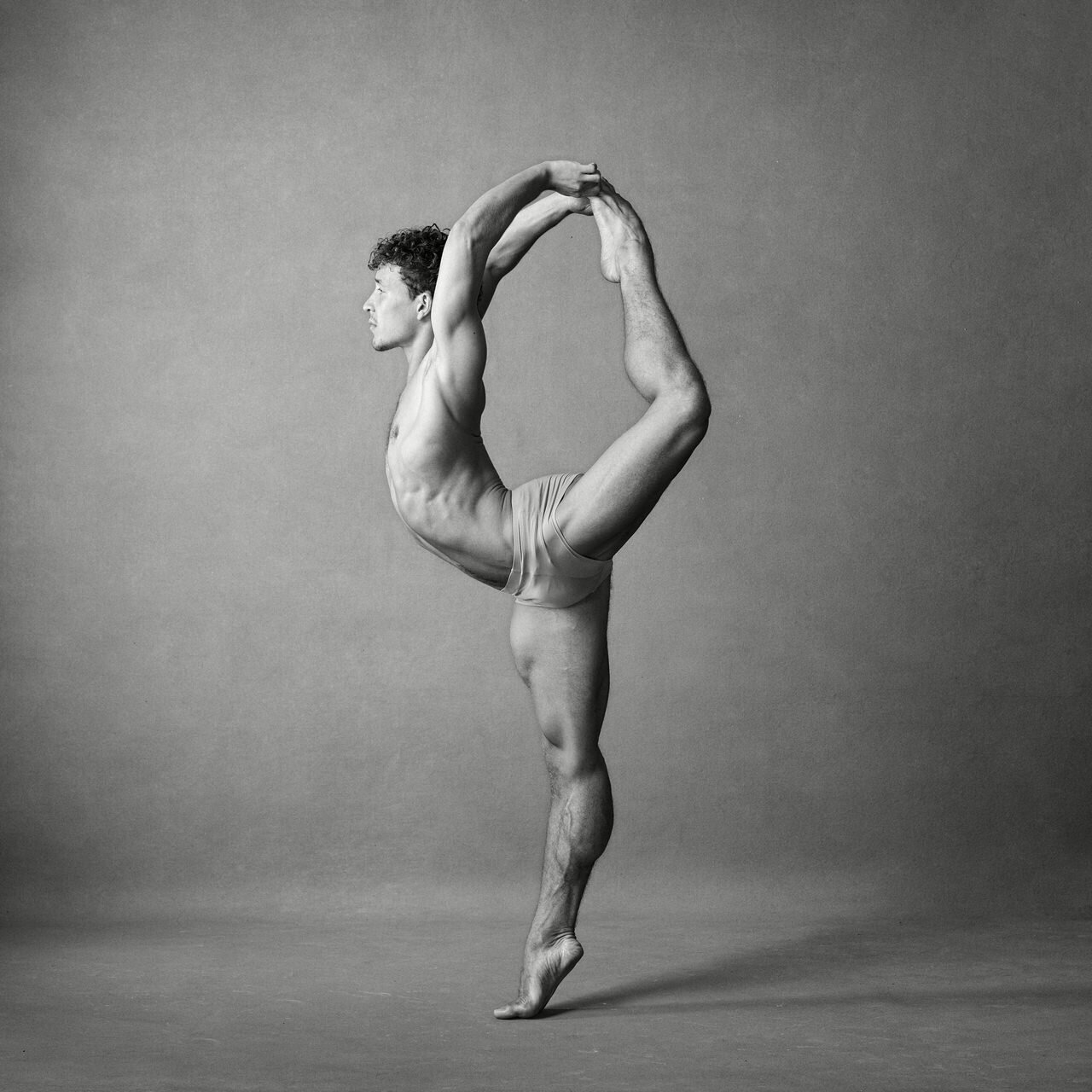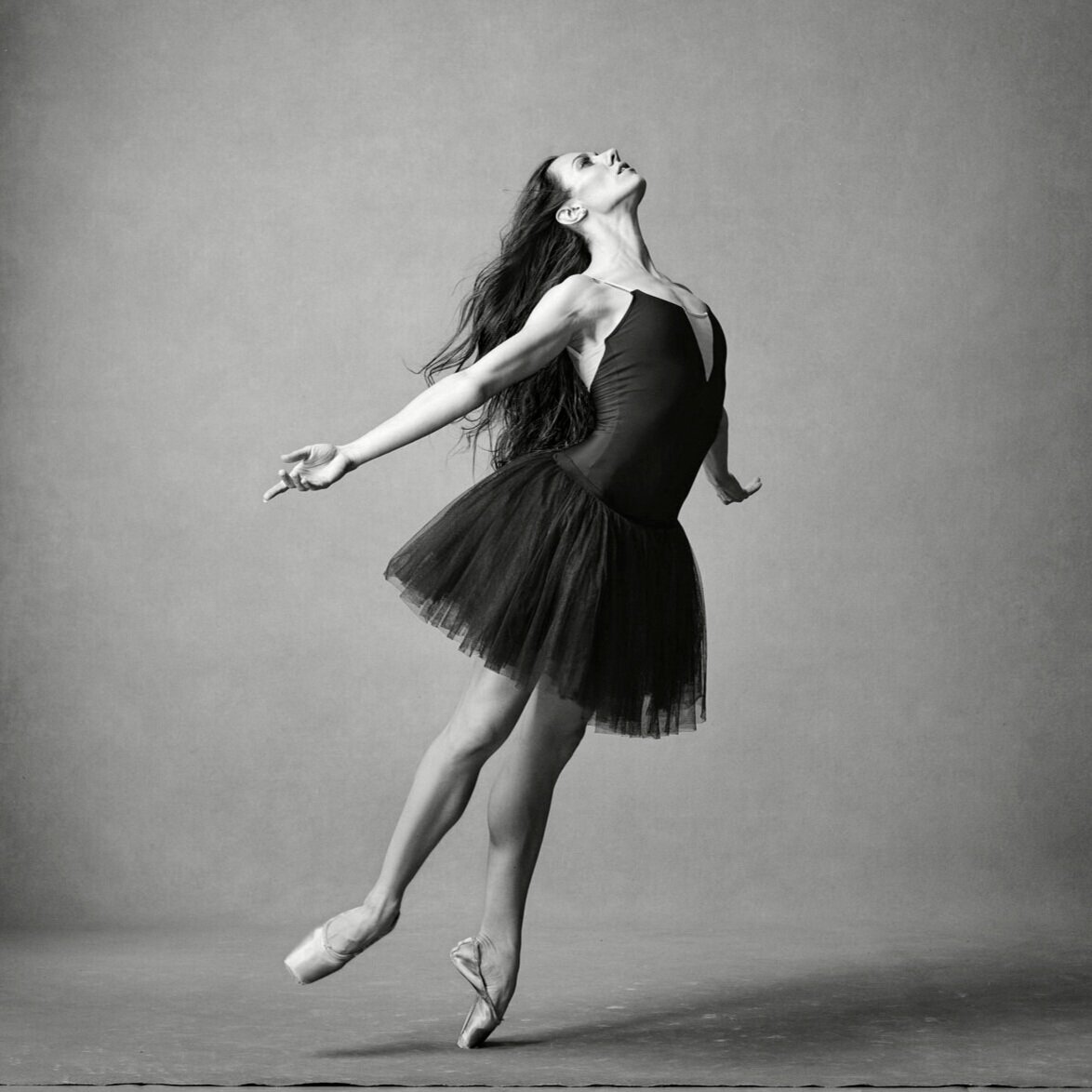FALLING BACK IN LOVE WITH BALLET
A photographer’s story about a switch from dancing ballet to photographing it.
Esnel Ramos
HOW IT BEGAN
You need to photograph things you are passionate about, and for me, it’s portraits and dancers. I need to do what I enjoy. To be free. In 2010 when I ended my dancing career to become a full-time photographer, I enjoyed doing photography more than performing ballet. It hasn’t changed since then.
My photography path began in Moncton, NB, on the East Coast of Canada, where I photographed marketing content for the ballet company I danced at - the Atlantic Ballet Theatre.
Quitting ballet opened up a whole new world for me. Mature world. At the start, while I was figuring out my style and searching for my place in photography, I took every job I could, including headshots, corporate gigs, weddings, families and even interior design.
At one point, I started working on a series of implied nude images studying light, shadow and the human form. It was my attempt at tying my ballet past to photography present. Working on this project helped me realize what type of aesthetics I want my work to have.
Caption: Eldiyar Daniyarov / Phase One P30+ Schneider 80mm f2.8 at f/8 1/125sec. ISO100
Everything was so new and exciting that I was exploring different genres with equal passion and enthusiasm.
However, I didn’t share the same passion for ballet photography. At least not at first.
It wasn’t until I moved to Montreal in 2015 when I rediscovered my forgotten love for ballet. Montreal is a city with a vibrant dancе community that gave me a sense of belonging. I was falling back in love with ballet only this time as a photographer.
My ballet background helped me get a few jobs photographing shows and rehearsals for Les Grands Ballets Canadiens de Montreal. Then, they commissioned me to create an official portrait of the new artistic director Ivan Cavallari. Afterwards, I photographed the entire season advertising campaign for them and worked with the company closely ever since.
There I learned about the marketing side of the ballet industry as well as creating images that visually engage viewers, whether it’s a small thumbnail on social media newsfeed or printed on huge billboards along highways.
LEFT TO RIGHT: Yui Sugawara. “Gisele”; Julia Bergua, “Sleeping Beauty”; Mai Kono. “Lady Chatterley’s Lover”
Advertising posters for Les Grands Ballets de Montreal
Anya Nesvitaylo / Phase One P30+ + Mamiya 35mm f3.5 at f/6.3 1/50sec. ISO100
My wife Anya Nesvitaylo, a soloist with Les Grands Ballets de Montreal and a subject of many of my photoshoots, always pushes me to take my photography further, to be braver and bolder. She’s also a ruthless critic of my work because we both know that there’s no place for sugar coating in ballet.
Ballet is a huge industry. Ballet photography is complicated. Besides exceptional photography skills, one also needs to have a particular set of technical knowledge of ballet and its vocabulary.
CLASSICAL BALLET
Classical ballet is the oldest form of ballet and serves as the foundation for many other dance styles. Dancers follow traditional techniques regarding the positions of every part of their body. In a way, it’s easy to photograph due to its formalized approach to poses, jumps, positions of the arms and legs, elongated lines, turned-out feet and pointe work. Movements are fluid, graceful and quite predictable for a trained eye of a ballet photographer or balletomane.
Sets and costumes are elaborate. Many classical choreographies are storytelling and remain unchanged for many decades, some even for up to a hundred years. However, this leaves very little room for dancers’ creative expression.
Polina Buldakova and Oleg Kulikov. “Swan Lake” by Perm Ballet / Nikon D700 + Nikkor 200mm f2 at f/2 1/800sec. ISO6400
NEO-CLASSICAL BALLET
Neo-Classical and especially Contemporary Ballet allows for more creative and technical freedom for choreographers and dancers to explore. Traditional ballet rules are not applied and often purposely broken, allowing for greater movement range, relaxed steps, less formal body lines, turned-in feet. Contemporary choreographies emphasize continuous movement without defined endings, accent points or static poses. This lack of technical laws makes it difficult to anticipate a dancer’s next step and creates challenges for a still photographer. Sets and costumes are often minimalistic, and choreographies are non-narrative. Dancers often perform barefoot.
“The Rite of Spring” by Étienne Béchard for Les Grands Ballets / Nikon D810 + Nikkor 85mm f1.8 at f/2.8 1/250sec. ISO1600
ON WORKING WITH DANCERS
Ballet photography is also about understanding dancers’ bodies, their strong sides, physical abilities and limitations.
An image that might look “pretty” to a regular photographer can be utterly unacceptable to a professional dancer.
Photographers must understand that a bad photo of a dancer posted online will remain there for a long time and can cost the dancer a potential job.
Just because I was a ballet dancer, doesn’t necessarily make me an excellent ballet photographer. So there was a bit of work there for me to earn the trust of professional dancers. Only once I establish that trust and connection - we can begin creating good images.
LEFT TO RIGHT: Celestin Boutin, Maude Sabourin, Anya Nesvitaylo, Kiara DeNae Felder, Jordan Faye, Melih Mertel, Esabelle Chan, Matthew Cluff, Rachele Buriassi.
Dancers are extremely self-conscious about their body imperfections. They spend all day in front of a mirror studying them. Their profession is hard every-day labour carving their bodies to perfection.
I always advocate for hiring real dancers instead of “models with dance experience” for commercial jobs.
During advertising photoshoots, I want dancers to be confident that there’s someone behind the camera, who has their backs and makes them look their best. Posing dancers is very easy. They favour creative and technical directions, and they follow them exceptionally well.
First, I must recognize the type of dancer in front of me. If that person is good at posing and has beautiful body lines, I’ll prefer static poses. Knowing this in advance, I won't worry about setting up my lights closer to the dancer if I need to. With contemporary dancers who are good at improvisation, I let them improvise for a moment. Suppose I see something that I like I ask to repeat that combination of steps a couple of times, asking to make adjustments such as head position, torso twist, arm swing etc. Then we move onto the next routine. For these dancers and also good jumpers, I’ll set up the lights farther away, allowing them more space to execute their steps more freely and safely.
Anya Nesvitaylo Leaf Credo 40, Mamiya 150mm 2.8 at f/3.2 1/250 ISO200
Rachele Buriassi, Leaf Credo 40, Mamiya 150mm 2.8 at f/3.2 1/250 ISO200
A ballet photographer must also be a choreographer. Whether it’s a live show or a shoot in-studio photographing dance is a game of prediction. Follow the movement and try to get half a step ahead of the choreography. It’s a constant pursuit of that fleeting moment - the peak of the action, where everything comes together perfectly.
When your camera takes one frame per second (talking about medium format here), the “spray and pray” approach is not an option. Anticipate the peak of the action, compensate for the camera’s shutter delay and take a shot. One shot. Repeat.
MY APPROACH
I use a portraitist’s approach to working with dancers. In my personal work, I’m not that interested in a dancer’s physical abilities. Instead, I feel more attracted to dancers with unique personalities, a strong stage presence, and who can freely express themselves through movement.
“Instead, rather than creating a photo OF a dancer, I want it to be ABOUT a dancer. I strive to show how I see them as opposed to showing what they look like.”
Esnel Ramos, Mariya Abashova, Jeremy Galdeano
It’s very easy to photograph dancers with beautiful bodies, perfectly arched feet, unbelievable splits and jumps. But as a photographer, it is easy to hide behind those features and inevitably disappear as an artist. It scares me. When an image is all about a body, when there’s no emotion, no soul, it’s just becoming documenting—just another image on Instagram with hashtag #ballet.
Instead, rather than creating a photo OF a dancer, I want it to be ABOUT a dancer. I strive to show how I see them as opposed to showing what they look like. I don’t wish just to document beautiful legs. No. I want to show drama, tension, expression, personality. I want to show it through their bodies, facial expressions, and dynamic lighting. It has to be believable and visually engaging. This way, an image becomes about me, my vision and aesthetics as much as it is about the dancer.
Caption: Maria Abashova. Eifman Ballet / Leaf Credo 40 + Mamiya 35mm f3.5 at f/9 1/125sec. ISO100
THE GEAR
I taught myself to make shoots work with what I own or shoot with the best I can afford. I currently use Mamiya Leaf Credo 40 system for all my in-studio and on-location work and Sony A7III for rehearsals and performances.
I’ve been working with a medium format (MF) camera system for the past 10 years. When photographers describe the medium format, they often talk about detail, texture, how the depth of field renders on a bigger sensor, dynamic range, and colour science. And “the look”. That distinctive, recognizable look. These were the reasons why I made the switch from full-frame to MF.
Mamiya Leaf Credo40
However, medium format is not a popular choice for shooting any kind of action. While I love the look and feel of the final images, shooting with the system presents many challenges in my field. Slow focus speed, focus hunting, fiddling around with often camera lockups are one of those known issues. When working on location, I usually have to be tied to a tripod and sacrifice my mobility. So, I’m always searching for a medium format camera that won’t require such sacrifices.
Despite the negative things above, the output files are beautiful and sometimes worth putting up with a system that isn’t perfect.
Fujifilm GFX100
I recently tested Fujifilm GFX100 on a few outdoor photoshoots. The camera allowed me to shoot freely, connect with what’s happening in front of the camera rather than behind it, and immerse myself in the creative process.
Ballet photography requires action-stopping flash power. So for lighting, I use the Profoto 7A power pack and rent additional D2 heads when needed.
IN CONCLUSION
I will always see ballet through a prism of a ballet dancer. This is both my greatest strength and weakness.
It inspires me how other photographers see and capture ballet. The work of Erwin Olaf is a good example - a perfect marriage of fine art and commercial photography.
Like ballet dancers seeking acknowledgement and appreciation from their audience, frankly, I often find myself seeking the same as a photographer. But it’s a dancer who will always be the hero of my images.
“…it’s a dancer who will always be the hero of my images.”
Myriam Simon, Les Grands Ballets
Andre Santos, Les Grands Ballets























